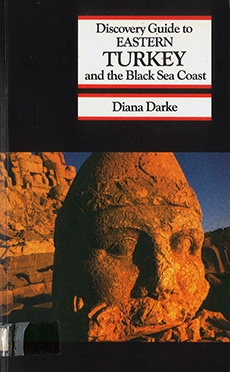|
DISCOVERY GUIDES
Discovery Guides cover the less familiar places of the world or look at familiar places in a fresh and original way. This Discovery Guide to Eastern Turkey covers a vast and largely unknown expanse of land which has never before been treated in such depth, having been relegated to the last 50 pages of books attempting to squeeze the whole of Turkey into one volume. But this guide starts where others begin to peter out, ie beyond Istanbul and the Aegean and Mediterranean coastlines. It encompasses everything from Ankara and Konya eastwards, a few sites that lie west of Ankara, and the whole of the Black Sea coast.
Far removed from all European civilisations, the region was scarcely touched by the Greek and Roman heritage which so influenced the Aegean and Mediterranean coastlines.
Surrounded by unfamiliar cultures like the Hittites, the Urartians and the Armenians, there is much that needs explanation. The policy throughout has been to incorporate such background and historical insights into the text while you are actually standing looking at the site or building in question, often elucidated by entertaining quotations from earlier travellers whose comments remain now as apt as they were in their own day: little has changed in Eastern Turkey in the last hundred years.
By way of compensation for the dearth of information provided on the region in the past, the guide sets out to be as comprehensive as possible: the Background section is full and explicit, especially on the subjects of food and accommodation; a scaled map at the head of each chapter details all the sites and places covered so that the traveller can see at a glance what lies ahead of him; simple plans are given of most larger towns to help instantly pinpoint hotels and noteworthy buildings (a distinct scarcity of signposting on the ground makes these invaluable); Practical Information sections at the end of each chapter cover accommodation, food and transport. In addition to these general matters the book carries two specific and unusually detailed sections, both of particular relevance to Eastern Turkey: one on mountains and mountaineering, the other on birds and birdwatching. Even for the complete novice it is hoped these sections will add to the enjoyment and interest of a holiday in Eastern Turkey.
Readers are invited to contribute additional material or help update existing detail by writing to the Discovery Guide to Eastern Turkey, Michael Haag Limited, PO Box 369, London NW3 4DP, England. Thank you.
Background
Dispelling the myths
The flat central plateau
Turkey as a whole has long suffered from an image problem in the eyes of the West, an image that began at the time of the Crusades, was continued throughout the Ottoman period and perpetuated in such films as Midnight Express. The West was in no doubt: Turkey was a dark barbaric place of guaranteed stomach upsets, where the slightest misdemeanour would lead to instant and indefinite imprisonment. Turkey’s Aegean and Mediterranean regions are at last beginning to shed this image, as increasing numbers of foreign visitors discover for themselves the difference between the image and the reality.
Eastern Turkey however remains for most people an unknown, a complete blank, and many are convinced that much of it is totally out of bounds to travellers. Twenty-five years ago, this was largely true, with whole tracts designated military zones and with travel for sheer interest or pleasure’s sake virtually impossible to arrange.
Now you can travel freely anywhere you are likely to want to go. Where certain sites lie very close to the borders with Russia, Iran, Iraq or Syria, permits are required to visit them. Ani, the Armenian ghost town on the Russian border, is the case that will affect most people, but obtaining a permit is a routine process undertaken at the local tourist office at Kars. Beyond these border regions the only other part of Turkey where travel is in any way restricted is in the Hakkâri, the extreme southeast. Even here, the main roads are open, and it is only if you decided to head up into the hills and villages that you would probably be stopped and questioned.
The east of Turkey does however remain a very different part of the country to the western and southern coastal regions. Whole stretches are vast tracts of bleak wilderness, the climate is subject to harsh extremes of heat and cold, and facilities for food and accommodation are generally meagre. Despite all this, the country has a power in its sheer scale and roughness that is almost demonic. Most surreal of all is the vast and eerie Lake Van, its thin piercing blueness ringed with snow-covered peaks as high as anything Europe can offer.
Large areas of the east and some areas of central Anatolia have been covered in sheets of lava which are often of such recent occurrence that soil has not yet been formed— consequently there are wide expanses which are sterile and uninhabited. The Van region, once heavily wooded, is now denuded after centuries of man chopping down trees for fuel in the long hard winters and for building …
| 